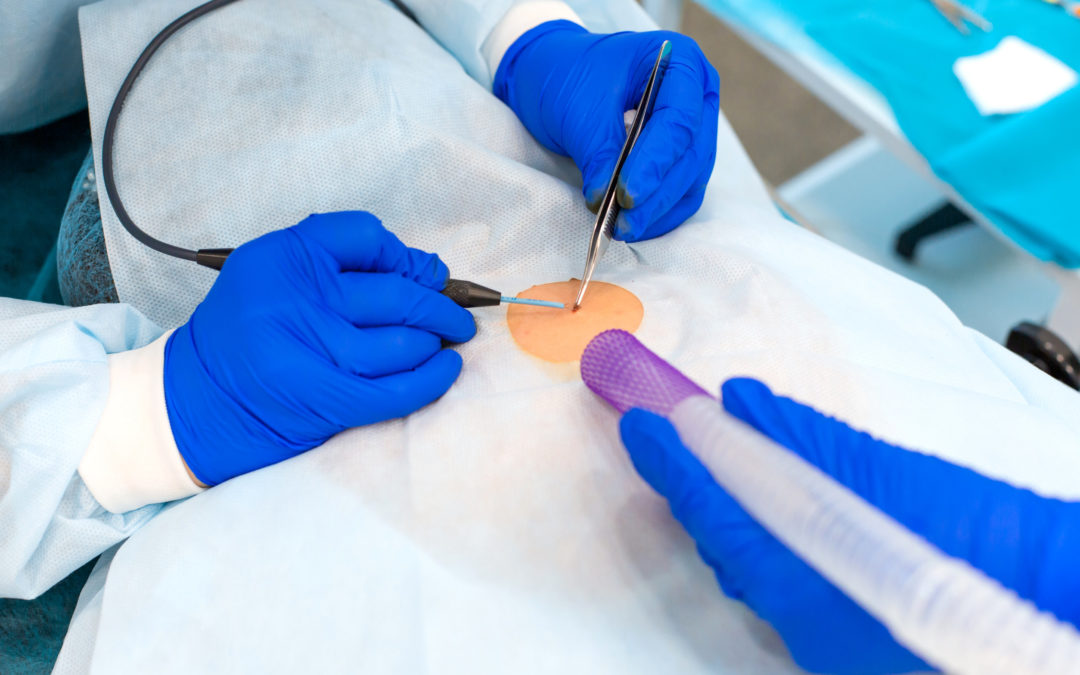Melanoma is a form of skin cancer that forms when melanocytes, which are the cells in the skin that contain pigment, grow uncontrollably. While melanoma is less common than other forms of skin cancer, it can spread to other areas of the body if it is not identified and treated early.
Treatment for melanoma can vary from case to case. Typically, surgically removing the melanoma is recommended for treatment, and this process can cure early-stage melanomas.
Here, we’ll discuss the types of melanoma removal and how each differs as a skin cancer treatment.
Types of Melanoma Removal
Wide Excision
To diagnose melanoma, doctors remove the suspicious mole or portion of skin in a process called a skin biopsy. This skin is then sent to a lab to confirm whether or not the lesion is a melanoma.
If you’re diagnosed with melanoma, it is likely that the skin biopsy didn’t remove all of the cancerous tissue, so wide excision may be recommended to fully remove the melanoma. This minor surgical procedure can cure most early-stage melanomas.
For a wide excision, your doctor will use local anesthesia to numb the area. Then, the melanoma and a small portion of healthy skin around its perimeter, called the margin, are removed. The skin that was removed is examined under a microscope to ensure that all of the cancer cells were removed.
Mohs Surgery
Mohs surgery is a method of removing skin cancer one layer at a time. This process was developed to ensure that all of the cancer cells are removed, while leaving the healthy surrounding skin intact. Today, Mohs surgery is considered the most precise treatment for skin cancer and can provide a cure rate of up to 99%.
Unlike in wide excision, no margin of healthy skin must be removed during the procedure. Instead, only the cancerous tissue is removed. Additionally, in Mohs surgery, 100% of the excised tissue edges are checked under a microscope. In a standard excision, less than 1% of the margins are examined microscopically, which can lead to missed cancer cells.
Mohs surgery is most commonly used for basal cell carcinoma and squamous cell carcinoma, but may be used in some melanoma cases.
Dr. Bowman is a fellowship-trained Mohs surgeon and has extensive experience in melanoma removal. Schedule a consultation at The Bowman Institute today to learn more about treatment options for melanoma.

